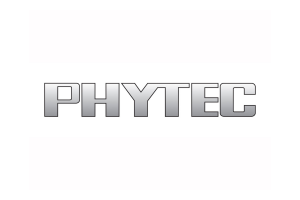Algorithms Against Carcinomas
Prostate Cancer: AI can Replace Every Second Biopsy
More accurate diagnosis thanks to AI: The combination of risk markers, systematic MRI analyses and algorithms can help to predict malignant changes in the prostate more accurately than before. For low-risk men, the new AI method could eliminate half of all tissue biopsies.
The ultimate nightmare for men: elevated PSA levels. The prostate-specific antigen is a marker for prostate cancer, and cancer cells secrete many times more of it than healthy cells. If an abnormally high concentration is detected during screening, an MRI is required for more precise clarification. The »multiparametric MRI« combines various imaging techniques and therefore provides very detailed images. However, final certainty can only be obtained by removing tissue from the prostate.
| Cancer of the prostate gland is the most common type of cancer in men in many countries and the second most common cause of death from cancer after lung cancer. |
|---|
AI Instead of Biopsy for Diagnosis
A biopsy is a minor operation in which tissue samples are taken from the prostate. The invasive procedure also involves risks: In rare cases, infection or bleeding occur and the patient may have to be hospitalized. Doctors are therefore constantly researching methods to assess the risk of cancer non-invasively and improve risk prediction. Today, the probability of prostate cancer is usually estimated using a calculator that takes into account the PSA value, age and prostate volume as well as MRI images systematically diagnosed using PI-RADS. Artificial intelligence offers a new possibility.
| »Our aim is to filter out those men who only have a minimal risk of cancer. They could be spared tissue removal or at least postpone it for some time,« |
|---|
| says David Bonekamp, radiologist at the German Cancer Research Center (DKFZ) |
Men with a high probability of prostate cancer, on the other hand, benefit from the biopsy, as the cancer can be detected early.
Deep Learning and PI-RADS Diagnostics
Scientists from the German Cancer Research Center (DKFZ) and the Urological University Hospital in Heidelberg used a specially developed algorithm for a retrospective study with data from 1627 men. The DKFZ AI was trained with the MRI images of over 1000 of these men. The researchers used the remaining 500 or so data sets to test whether their AI risk calculator could predict prostate cancer more accurately.
When the AI calculation replaced the PI-RADS value in the risk calculation, the results remained almost the same as with the current diagnostic method. In contrast, the combination of AI and PI-RADS was successful and diagnosed only a very low risk of cancer in half of all men who underwent a biopsy.
| »This means that the combination of deep learning and radiological findings could theoretically have avoided almost half of the biopsies without missing a relevant number of tumors«, |
|---|
| says Adrian Schrader from the DKFZ, first author of the study. |
The DKFZ radiologists conclude from the study that the data from the deep learning-based AI and the proven PI-RADS method complement each other and, in combination, better assess the actual cancer risk. In other words, as soon as further studies confirm the benefits of the AI method and rule out any disadvantages, diagnostic AI against prostate cancer can improve further examinations - and possibly make every second biopsy superfluous. (uh)





